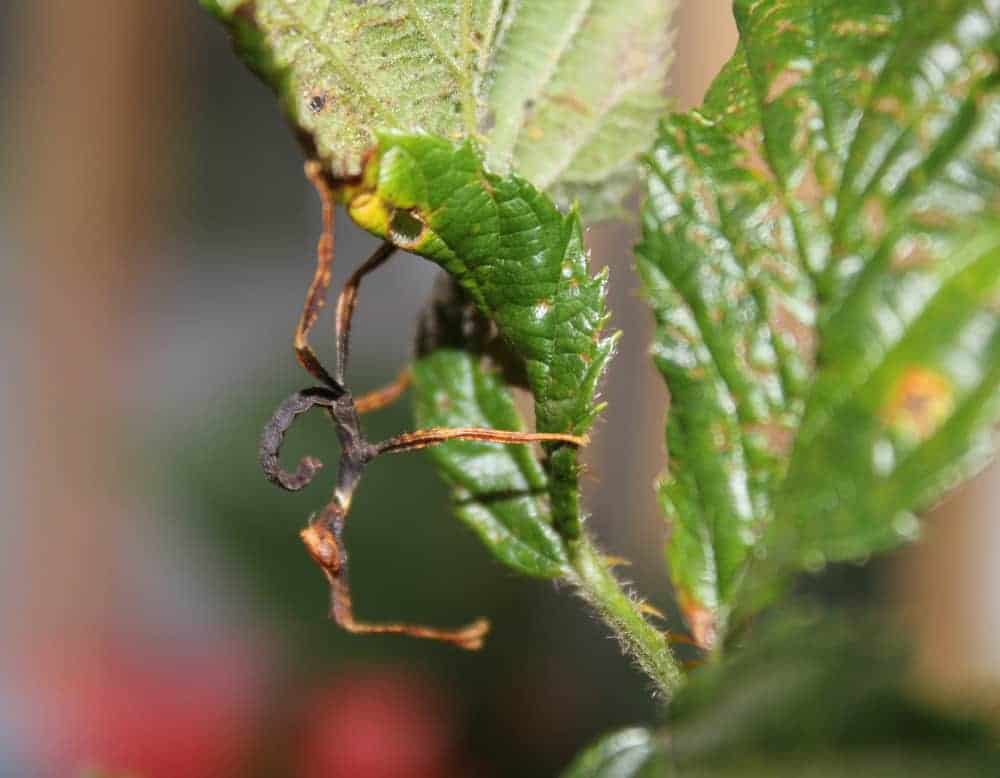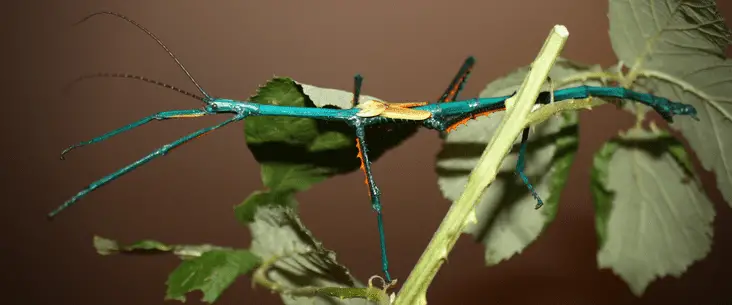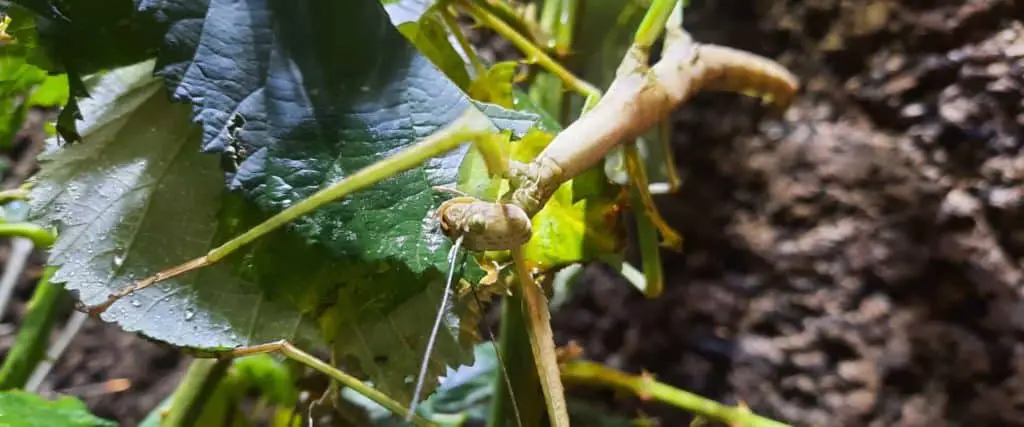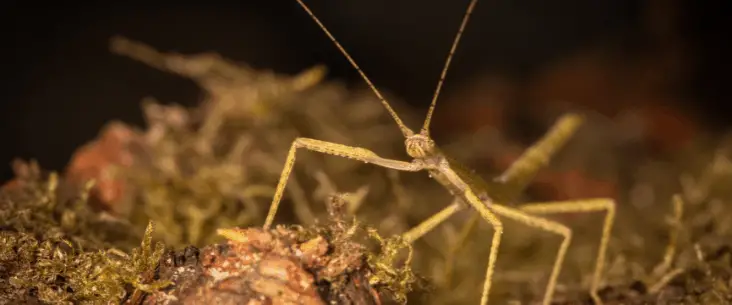Breeding success with little stick insect nymphs is an amazing feeling. Not only does it feel good to reach such achievement, but it also makes your beloving pet more sustainable for many years. But it can be frustrating when your nymphs keep dying. But what are the reasons they die, and more importantly, how can you make the care better to keep them alive? This article will discuss the main reasons why nymphs may die and how you provide solutions to keep your nymphs alive and healthy.
The most common reason stick insect nymphs die is that they don’t accept the food you provide. Other problems like incorrect climate, overpopulation and disturbance may cause your nymphs not to survive their first life stages. Choosing the correct breeding method and provide correct food in a certain way increases nymph survivability.
Breeding stick insects can be challenging, and fragile nymphs need good care. We will provide you with tips to increase your nymphs’ survival rate and let you succeed in breeding stick insects. But first, it is important to understand why they may die in the first place.

5 main reasons why stick insect nymphs keep dying and how to solve it
Frustrating! A couple of days ago you saw a newly hatched nymph walking around in your enclosure! It is a beautiful sight, and it gives a rewarding feeling. But now it lay dead, and you don’t understand why? Let’s discuss the main reasons why nymphs may die in captivity and how we can solve those problems.
Food acceptance
One of the biggest issues why stick insect nymphs don’t make it is that they don’t start eating. Without food, they won’t survive long and will die in a couple of days. Some stick insect species have trouble to start eating in captivity. Phyllium species are notorious for not start eating.
It can be that the stick insect nymphs do not like the leaves you feed. However, if you feed bramble or rose leaves, most species will accept that perfectly. Generally, you can say that what adults accept, nymphs will accept as well.
The other problem is that they can have difficulties finding the leaves. Many stick insects start their life on the forest floor where the eggs are dropped or buried. The first thing they do is follow the light and climb to the top of trees to find the best leaves. In your enclosure, they do the same. However, there is not always leaves to be found in the top of your enclosure. You often see nymphs hanging on the lid of your enclosure, and not sitting on the provided leaves.
One way to prevent nymphs from walking away from the leaves is to use a method called ‘Free-Standing Setup’. This method is that you simply provide the stems with leaves in such a way that it does not touch the sides or top of the enclosure. When you place newly hatched nymphs on the plant, they won’t walk off that quickly. Nymphs will almost always walk up towards the light and don’t leave the plant via the floor. That way, it will always sit on the leaves and will start eating soon after.
It also works very well to cut off the leaf margins. Technically you damage the leaf so that it is easier for the small nymphs to feed on it. This works particularly well for Phyllium species. You could also place older nymphs in the enclosure that are older and have no problems eating the leaves. They will make a start for the newly hatched nymphs to feed on. But be careful not to make it too overcrowded in the enclosure.
Incorrect climate and dessication
An incorrect climate may cause nymphs to have difficulties and make them less healthy and die. You should keep them at the best climate range for them to thrive. The optimal temperature and humidity range differ between species. Although the temperature has not that large of an influence, humidity does.
An environment that is too dry will cause problems with moults and can cause desiccation of your nymphs. Moisture and humidity are important for newly hatched nymphs. They need enough hydration directly from day one. It can also cause problems with hatching.
Although moisture is important, spraying water in the enclosure can have the opposite effect. Larger water drops can cause small nymphs to get stuck on and occasionally even drown. When spraying the enclosure, do it scarce and use a really fine misting.
To increase the humidity, it is good practice to moisture the floor or using a paper towel substrate that can absorb moisture. This way, the water will be slowly released, increasing the humidity without the risk that nymphs will get stuck on water drops.
On the other side of the scale, you also need to be careful not to overdo it. An environment that is too humid or contains too much moisture can also cause problems. Try to balance it, not fluctuating from too dry to too moist.
Disturbance and stress
Stick insects can be quite fragile animals, and newly hatched nymphs are even more delicate. Too much disturbance is stressful for nymphs and eventually may cause them to die.
However, a disturbance is quite a broad term. In this case, we talk about two types of disturbances: vibration (sound) and handling.
Vibration like hard sounds, music, and running children running by repeatedly is quite a disturbance for nymphs. Nymphs detect those vibrations and may react with defensive behaviour to avoid it (possibly because they think it is a predator). If they experience this stressful situation repeatedly, it can be harmful to newly hatched nymphs.
Handling is quite the same. Handling can be really stressful for newly hatched nymphs. Don’t handle or touch them except when it is absolutely necessary. Besides that, nymphs are fragile, and with handling, you can damage nymphs quite easily.
Overpopulation
Overpopulation can also be a disturbance for the nymphs. Too many animals together make space scarce for them to sit and rest. It may also prevent some nymphs from reaching a fresh leaf.
In the worst case, especially when food is limited, nymphs may start to feed on each other. This behaviour is seen with leaf insects (Phyllium spp.) or when different species are housed and raised together. Don’t place too many nymphs together in one enclosure (or don’t place too many stick insect eggs in one place to hatch). You can read it here what to do when you have too many stick insect eggs.
Wrong breeding method
When you start with breeding nymphs, you have to suit the breeding method with the natural breeding behaviour of your stick insect species. Many stick insects randomly drop their eggs on the floor. But some species burrow their eggs, and others pierce or glue their eggs on leaves and stems.
When you wish to breed with them successfully, you need to adjust the breeding method that suits the species. Otherwise, the hatching and survival rate of nymphs will be much less. In the next section, we discuss some different strategies and breeding methods for stick insects.
Recommended read: Basics of breeding stick insects
There is much to learn about breeding stick insects! If you want to know more about breeding stick insects, I recommend reading our basics guide on how to breed stick insects. It is packed with practical tips and all the knowledge you need to breed stick insects successfully.
Different breeding methods for stick insects
We already mentioned that you need to adjust the breeding method so that it suits the species. You can breed with stick insects broadly in three different ways.
- Incubation in the adult enclosure — This is the most simple method. When you have breeding adults who lay fertile eggs, you’re done! You let the eggs hatch and raise the nymphs in the enclosure where the adults are housed. For several stick insects, this method works perfectly fine. The downside is that you can’t specialize the climate and food availability to the nymphs, and it isn’t easy to monitor the nymphs in a larger enclosure.
- Incubation containers — This method means that you collect the eggs and transfer them into a special (smaller) container for the eggs to incubate. This breeding method works really well for stick insect species that randomly drop their eggs on the ground. With a small layer of a substrate (e.g. coconut fibre, sand, topsoil), you can also re-burrow the eggs with species that burrow their eggs.
- Cup-incubation method — With this method, you collect small amounts of eggs and place them in a cup, with another cup on top of it to make a tiny container. You could also use food deli cups. It is actually a small incubation container and works really well for ‘egg-droppers’ and ‘egg-burrowers’. This breeding method doesn’t work for species that glue or pierce their eggs onto leaves and stems.

Additional tips for breeding stick insects
With the above information and understanding, you probably will have more success with future breeding. Nonetheless, we like to discuss some additional notes for breeding stick insects.
- Handling using a brush — Stick insect nymphs are fragile, and when you want to pick one up, you risk of damage it. One way is to let the nymphs walk onto your hand/finger, but you can also use a small flat brush to get the nymph to transfer or move to another enclosure or place it on a feeder plant.
- Substrate — A substrate is not a necessity for stick insects and stick insect nymphs (accept for egg burrowing species). However, a substrate has absolutely some perks to the enclosure and also for breeding with stick insects. First, it maintains the humidity level more stable. It also makes the landing softer when eggs are dropped by the females (and you don’t hear the ticking noise all the time…). A substrate is not limited to coconut fibre, topsoil or sand. You could also use a paper kitchen towel or a kitchen cloth as a ‘substrate’ (again, at least for ‘egg-droppers’). It is easier to clean. In case of using white sand, be aware that some nymph species have difficulties walking on it, or when falling upside down to get back on its feet.
- Monitor climate — Temperature and humidity are crucial factors in the success rate of breeding stick insects. Therefore it can be important to monitor the temperature and humidity to understand better how the climate develops in your breeding container. We can feel temperature, but we humans have difficult to sense/feel humidity. With a simple (digital or analogue) thermo-/hygrometer, you can see what the climate is and if you need to adjust it.
- Make notes — You’ll become a better breeder whit experience. And better understanding and knowledge will come from making notes. Because incubation times are quite long for stick insects, it is good to make notes. Notes can include when eggs are found or collected, when you placed them in the incubation container, when the eggs are hatched, and when the first nymphs are moulting, and climate values.
How to dispose of stick insect eggs when you have too many?
As a breeder, you are responsible for taking good care of the stick insects that are hatched. But, with some stick insect species, you’ll have such an amount of eggs that you don’t know what to do with it.
For many species, it doesn’t matter to separate males from females. In several species, the females can lay fertile eggs without mating. And for many other stick insects species, the female stores the sperm after mating and can lay fertile eggs her whole life. Of course, you can incubate all eggs and sell them to other keepers in your neighbourhood. But if you don’t want the trouble or don’t want to incubate all eggs, how do you dispose of stick insect eggs?
If you do not want (all of the) eggs to hatch, the best way to get rid of stick insect eggs is to place them in the freezer for at least one week. This will prevent eggs from hatching. Afterwards, you can throw them away in the trash.
When you use a substrate where eggs are dropped on or burrowed in, it is best that you remove the substrate and collect it in a bag. Then place the bag in the freezer to have the same effect, although it is advised to leave the bag in the freezer a little longer (because of the substrate’s isolation capacity).
Never throw eggs away without freezing, or release stick insects (nymphs) in your garden, local park or forest. Non-native stick insects may survive in the wild and destroy complete gardens or negatively affect wild flora and fauna, even in such a way that native (stick insect) species will suffer because of it. But even native species should not be released, because this can cause overpopulation from your captive breeding and they can have higher hatching rates than native wild species do.
Want to know more?
If you like to know more about the stick insects and how you can keep and care for them, have a look at some other articles listed below!
– Biology of stick insects
– Do stick insects need a substrate?
– Feeding guide for stick insects
– Do stick insects fly?
Share this page!



